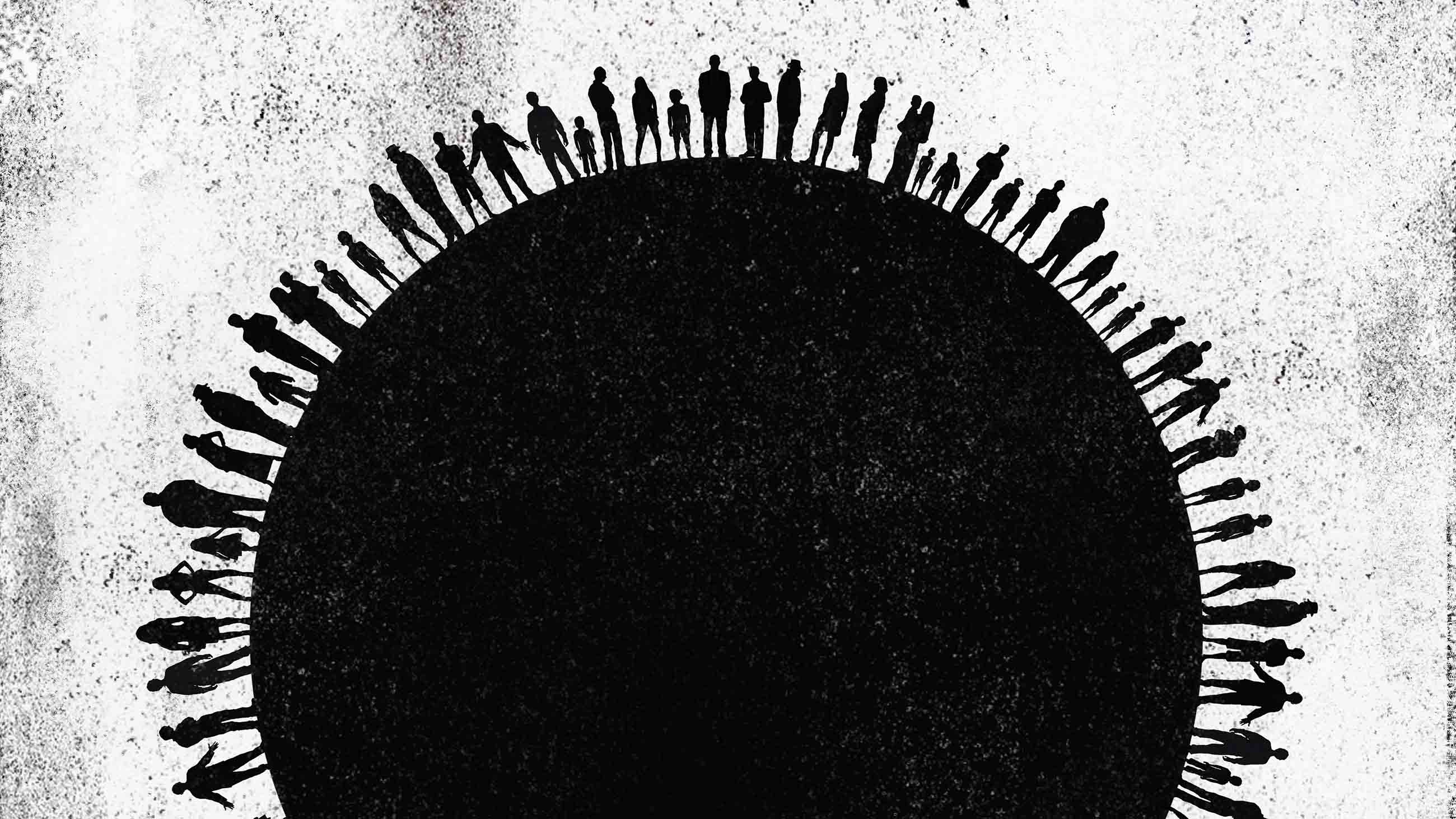At the Science March, Negotiating Divisions Over the Role of Diversity
Ayana Elizabeth Johnson is a marine biologist, proudest of her work as co-founder of the Blue Halo Initiative, a pioneering effort backed by the Waitt Foundation to support island governments and communities in “zoning” ocean waters and developing sustainable fishing plans to bring some order to the way fragile Caribbean reefs are protected.
In mid-January, she was shocked to read reports of rogue scientists hosting hackathons to back up irreplaceable climate and endangered species data before the Trump transition team took over. The thought that the kind of scientific data she depends on would ever be imperiled by an administration in Washington chilled her to the core, especially with the looming threat of climate change — “It’s almost a farce, the mess we’ve gotten ourselves into,” she says — and she watched with mounting interest as plans for the April 22 March for Science went viral.
On February 1, she posted on Twitter asking to get in touch with whoever was in charge. Within a few days, she had a March for Science email address and was one of the co-chairs for partnership — outreach to science organizations — and a member of the diversity committee.
Diversity, to Johnson, is a word with a broad range of meanings. The daughter of an American mother and a Jamaican father, tall and with big hair, she’s used to being surrounded in science gatherings by people who don’t look like her. “I’m an introvert,” she told Undark, “and I hate to be on the cover of things, but I do it, so that some brown kid may look at me and say, ‘Oh, I could be a marine biologist too.’” Beyond that, she and her partnership co-chair, Teon Brooks — a cognitive neuroscientist who’s an Open Science Fellow at the Mozilla Science Lab — consider it a major mandate to bring in those who may not be scientists but who depend on science: policymakers and others whose word rests on a foundation of data and research, in the interest of helping Americans see the often hidden role science plays in society.

The @ScienceMarchDC Twitter account has seen a series of official tweets followed by official deletions. Above, a now deleted Tweet decrying a recent U.S. attack on ISIS in Afghanistan.
But from the beginning — and to the dismay of some scientists and the glee of right-wing media — the March for Science, and particularly its diversity committee, has also drawn explicit connections between the lack of ethnic and gender diversity in science, and many of the larger problems in science itself. That line of thinking has exposed the March for Science to scrutiny — and sometimes fire — both from those who think diversity is of paramount importance, and from those who find it a distraction that will catalyze right-wing attempts to cast science as a left-wing, politicized enterprise.
These fears have been exacerbated by what appears to be an ongoing civil war over the @ScienceMarchDC Twitter account between moderates and radicals, with a now-almost choreographed series of official tweets followed by official deletions and apologies. On January 28, just days after the march had gone viral, the @ScienceMarchDC account tweeted that “colonization, racism, immigration, native rights, sexism, ableism, queer-, trans-, intersex-phobia, & econ justice are scientific issues.” The tweet was soon taken down and apologized for, but as the conservative Daily Caller put it, it raised questions “about how much the protest is about classical conceptions of science as opposed to social concerns from progressives, who also happen to like science.”
It’s not only conservatives who feel that way. A number of scientists — generally, it seems, older, whiter, and male — have argued that marchers can only harm the cause of science by focusing on divisive issues. The march, famed cognitive scientist Steven Pinker wrote on Twitter, “compromises its goals with anti-science PC/identity politics/hard-left rhetoric.” Then, on April 13, unknown parties at the March for Science published a Twitter thread on the dark uses to which science is sometimes put, culminating in a reference to the massive bomb detonated against ISIS hideouts in Afghanistan: “The GBU-43/B Massive Ordnance Air Blast is 1 example of how science is weaponized against marginalized people. #MOAB.”
This, predictably, won ridicule online, and was swiftly deleted. The tweet was the last straw for Jerry Coyne, a biologist at the University of Chicago who marched with antiwar and civil rights movements in the 1970s. “Under what sense are ISIS marginalized people?” he asked in an interview with Undark. “What does it mean to say science is weaponized? What is the purpose of this tweet?” He paused meaningfully. “To show science is oppressing people. Sure, you can follow the logic. Science made the results which were used to make ordnance, and we use them against a group that cuts people’s heads off. ‘Ah, but they only cut off heads because they’re marginalized!’ But that’s not the point. The point is to show that science is guilty of malfeasance. The problem is young leftists who wanted to combine with the science theme, and then went overboard.”
Part of the problem for Coyne is philosophical: It strikes him as incoherent to march for science while at the same time advancing a line about how bad science can be. More to the point, he finds it tactically troublesome: It would be as if the coalition that created the famed 1963 March on Washington had emphasized, rather than downplayed, their divisions, parading their (often violent) disagreements for the world to see. “We weren’t marching to say, ‘Hey, marchers have these problems.’ When you march, you put those divisions aside.” Scientists have a lot to lose from incautious politicking, he argues: A 2016 Pew poll found that 76 percent of Americans have confidence in scientists to act in the public interest, but only 27 percent feel the same about politicians.
This is mirrored, on the other side, by constant rumblings from social justice activists, especially on Twitter threads like #marginsci, which focus on the experiences of marginalized scientists. At least three members of the diversity committee — including early march advocates like Jacquelyn Gill, a biologist at the University of Maine — have publicly left the march over concerns about diversity and representation.

“We’ve gotten it from all sides,” Johnson said ruefully. For her part, she sees the march as means to an end — less about the impact it will have on Washington or American politics than as a sort of political convention and coming-out party for scientists themselves that will form the basis for a new political movement. “Diversity” is central to who gets included in that movement. Despite criticisms from people like Coyne and Pinker, mainstream science seems to agree, and the scientific establishment keeps piling on to join as partners. Part of that is signing a “memorandum of understanding” that includes the March’s Diversity Principles, and so far at least 265 organizations have done so.
And as for the question of “politicizing science,” Johnson goes back to the Caribbean, where the science she was doing, and the policy results she wanted to help local people achieve, were inextricably wound up in the social fabric of the islands whose people lived on — and polluted — the reefs. The question of how reefs have changed, or what is damaging them, might be scientific — but the question of how to fix any of that was ultimately political, and inseparable from communal issues. “Ocean conservation is basically about people,” she likes to say. “The fish are doing everything right.”
A divemaster, she did hundreds of data-gathering dives. During her graduate fieldwork in Curacao in 2007, she spent countless hours with old Antillean fisherman and young Dutch dive pros, drinking beers and listening to them gripe about how things used to be. How back in the day one guy with a snorkel and a spear gun could swim out from shore, no boat, and kill a dozen grouper in an hour; how now you’d have to take a boat out into the depths, work all day, and not catch nearly as much.
One story in particular haunted her: that of a fisherman, just 15, far too young to remember the old days himself. “He had heard the stories of what fishermen used to catch there,” Johnson said — how “they used to show the size of the fish they caught vertically,” as in height from the ground. “Now they [show them] horizontally.” She paused to let that land. “There’s been a complete transition of the ecosystem. The large fish are simply not there anymore.”
That kind of data became an anchor for policy: Johnson used it to help organize systemic change. She helped design a fish trap with an “escape gap” that caught commercial fish while allowing smaller ones to swim out — which cut bycatch by 80 percent without cutting fish yields. She and Wildlife Conservation Society zoologist Tim McClanahan won the Rare/National Geographic Solution Search award for that work in 2012. The gaps are now mandated by law in Curacao fish traps, and are also being used by fishing communities in East Africa.
And just as the internal practices and beliefs of fishing communities are intrinsic to conservation, so Johnson believes that gender and ethnic diversity is intrinsic to science. “Data collection itself, the numbers, the measurements that make up science — that may not be political,” she says. “But the question of what science gets done, what gets funded, who is creating the hypothesis, which communities have access to science education, who has inspiring science teachers, so the next generation of science can be diverse enough to ask the right questions — all these things are determined by politics.”
If black and brown kids from the inner city have “terrible science teachers,” they don’t become scientists, then they don’t grow up to do research on the problems they have firsthand experience with, like “the connection between terrible indoor air quality and health, or on water quality. We need to have all these people in science so we’re asking the right questions.”
Saul Elbein is a freelance journalist from Austin, Texas, whose work has appeared in The New York Times Magazine and The Texas Observer, and on “This American Life.” His first article on the March for Science appeared in Undark on April 12.











Comments are automatically closed one year after article publication. Archived comments are below.
Great article. Unfortunately, science will always be tied to politics. The key is for the scientists themselves to try and remain impartial. Let results speak for themselves and never take part in silencing opposition.
On another note, I find it a bit troubling that Johnson used “big fish stories” as part of her research and let it shape policy. Science needs to remain free of bias and pure. Often, this kind of “speculative science” is what gives science at large, a bad name. When lacking historical data the answer is just to say so or present the data that you can prove. I have no doubt that pollution is an issue but when you present anecdotal evidence and base your science around that, you muddy the water, so to speak.
Scientists need to be careful about where they make their bedfellows. The radical leftists hate free speech, and many of our other rights, too.
Unfortunately, this does seem to be the case. Interested parties could google recent events at Evergreen State and Berkley, in the USA.
It is a sad time to be open minded and liberal.